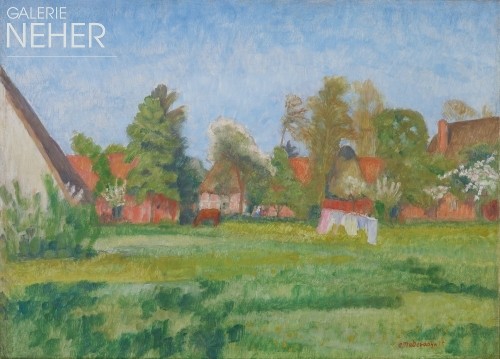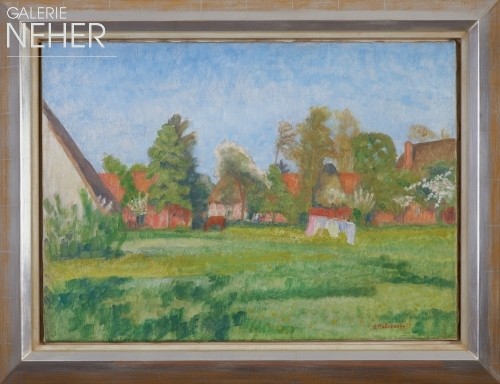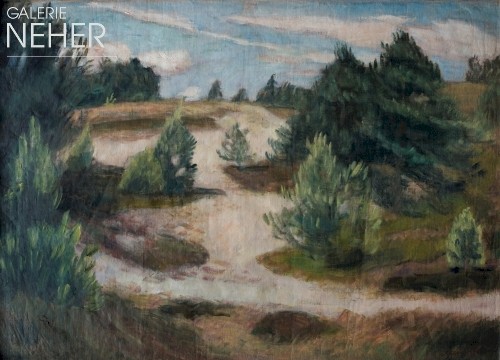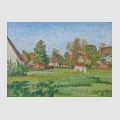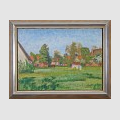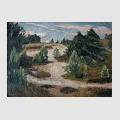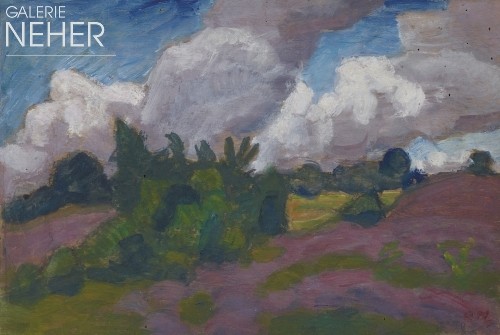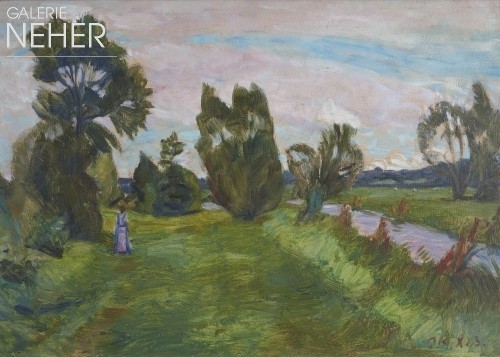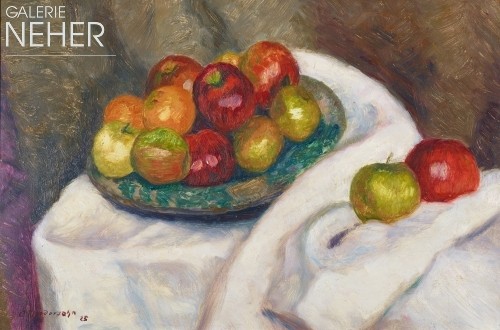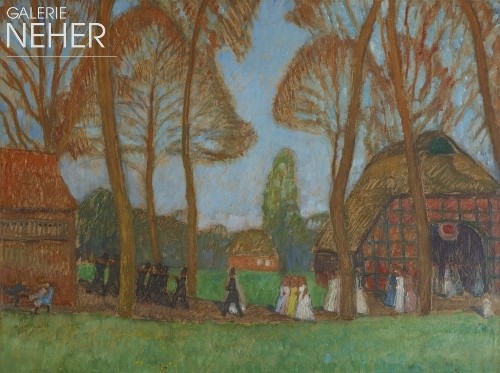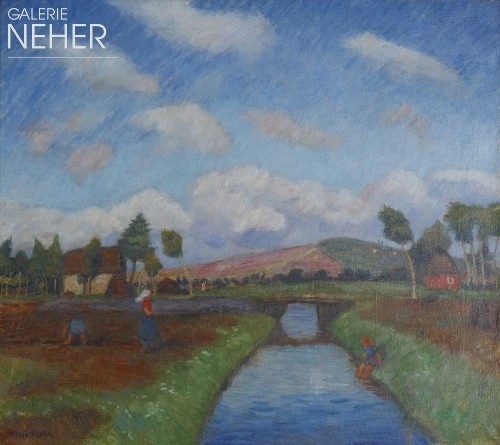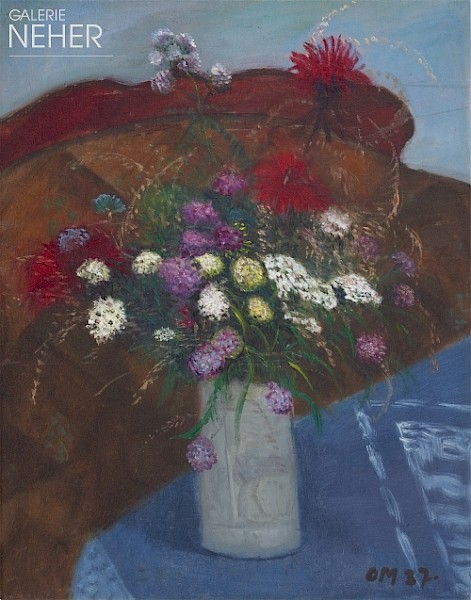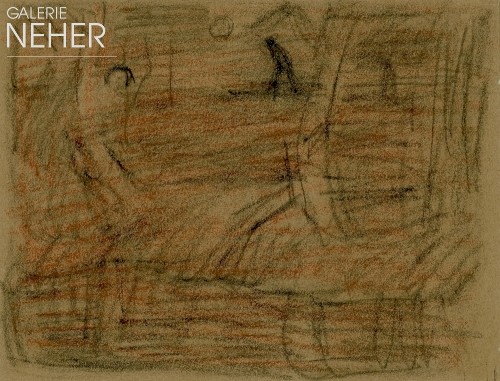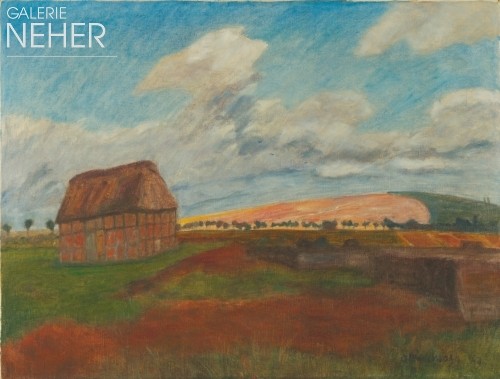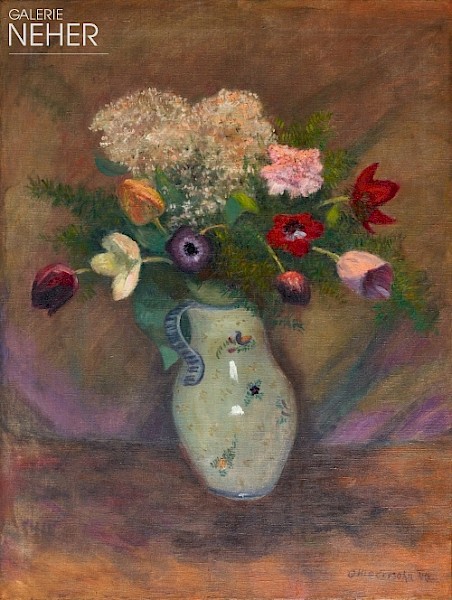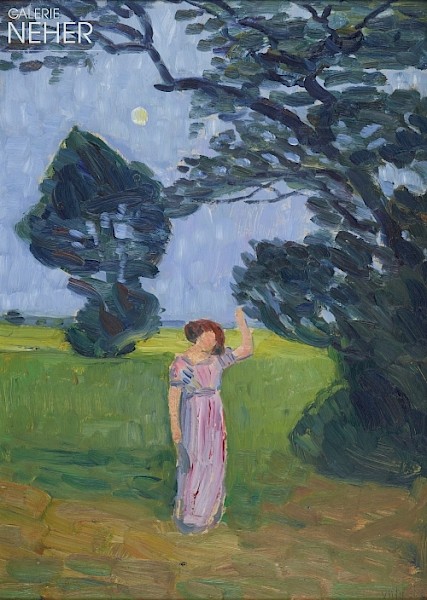Otto Modersohn - Frühling in Fischerhude (Spring in Fischerhude), 1925
Oil on canvas
50 x 70 cm / framed 65 x 85 cm
19 x 27 inch / framed 25 x 33 inch
signed bottom right, dated: “O Modersohn 25”
reverso: heath landscape, ca. 1928
– with handmade craftman’s frame –
N 9336
Expertise:
Otto Modersohn Museum, Fischerhude, Rainer Noeres, vom 10.3.2018
Provenance:
Kunsthandel Worpswede
Privatbesitz
Exhibitions:
Essen, Galerie Neher, Frühjahr 2022. Kunst aus dem 20. Jahrhundert, Katalog mit farbiger Abbildung Seite 13
Otto Modersohn - Frühling in Fischerhude (Spring in Fischerhude), 1925
Oil on canvas
50 x 70 cm / framed 65 x 85 cm
19 x 27 inch / framed 25 x 33 inch
signed bottom right, dated: “O Modersohn 25”
reverso: heath landscape, ca. 1928
– with handmade craftman’s frame –
N 9336
Expertise:
Otto Modersohn Museum, Fischerhude, Rainer Noeres, vom 10.3.2018
Provenance:
Kunsthandel Worpswede
Privatbesitz
Exhibitions:
Essen, Galerie Neher, Frühjahr 2022. Kunst aus dem 20. Jahrhundert, Katalog mit farbiger Abbildung Seite 13
About the work
A sunny spring day in Fischerhude, painted by Otto Modersohn in May of 1925. The foreground shows an open meadow, presented differentiated in transparent shades of green. Shadows in cool, dark green are witness to the presence of a tree, beneath which the painter found protection from the sun. Toward the middle, the green changes to the yellowish shade of the dandelions. The middle ground of the painting shows a row of farmhouses with their gardens and blossoming fruit trees in a complementary contrast of green and red shades. The arcadian scene is enlivened by the brown horse grazing in the meadow – the washing dries on the line in the sun. Above it all, a bright blue sky.
The painting shows a spring morning just as one might still experience it today in Fischerhude in May. The paintings of Otto Modersohn of the 1920s are characterised by French peinture. Highly differentiated in tone, elegant in colouring and rendered with rhythmic animation, the sixty-year-old Otto Modersohn presents himself here at the peak of his development as a painter. “One must encounter one’s subject entirely freely – art is a new creation by reference to or based on nature. Precisely here is where the joy in creation lies. A painting that breathes this freely becomes much better. One must compose one’s imagination with the breath of nature. One must reshape according to one’s ideas. A great painter is not one who faithfully reproduces nature, but instead one who fills nature with his imagination and allows it to emerge again as he beholds it.”(1)
1 Otto Modersohn, diary of 17 August 1924
Text authored and provided by Rainer Noeres, manager of the Otto Modersohn Museum in Fischerhude,
born 1948. Typesetter apprenticeship in Hamburg from 1965-1968. Study of fine arts at the Hochschule für bildende Künste in Hamburg (HfbK) from 1968-1973. Co-founder and operating partner of the Produzentengalerie Hamburg from 1973-2009. Teaching appointment for painting at the HfbK in 1974.
Married to Antje Modersohn, the daughter of Christian Modersohn, since 1976, three children. Decisively involved in establishing the Otto Modersohn Museum and archive in Fischerhude since 1977. Responsible for the creation of the catalogue raisonné of Otto Modersohn since 1980. Planning and execution of many exhibitions and cooperation projects with museums and art associations in Germany and abroad. Author of foundational publications on the work of Otto Modersohn. Employed since 2010 as head of the museum, as well as as voluntary managing director of the Otto-Modersohn-Gesellschaft e.V. and the Otto Modersohn Foundation, which were founded in 1989. Member of the board of the Otto Modersohn Foundation and of the Otto-Modersohn-Museum-Tecklenburg e.V. in Tecklenburg/Westphalia, founded in 2015. (Visit website)
